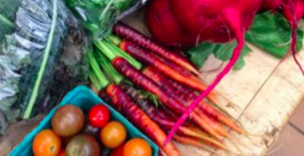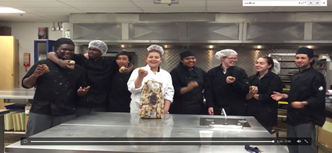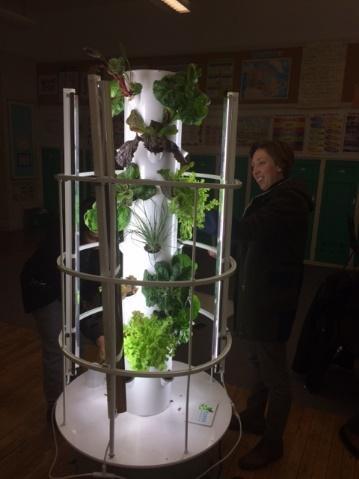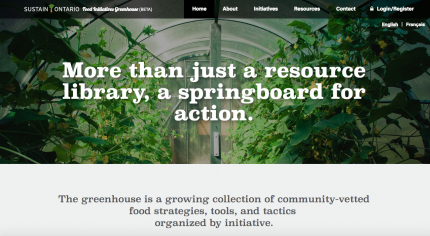The Final Q&A Lesson in Local Food Literacy: How can I find good quality lesson plans and resources?
Posted: June 14, 2018
Categories: Edible Education Network / GoodFoodBites / News from Sustain Ontario / Schools

Here we are, the 10th and final post of our Local Food Literacy blog series!
We hope you have been able to harvest some good tips, information and resources along the way from our Local Food Literacy in Schools FAQ Guide, developed by Sustain Ontario, Ecosource, FoodShare and Roots to Harvest.
For our last blog post in the series, we are going to point to and re-cap some of the great resources that are out there for bringing local food literacy and good food education into the classroom…
The Final Question: How can I find good quality ready-to-use lesson plans and resources to teach local food literacy to my class across a wide range of subjects? I don’t have a lot of time and so I want to be able to find specific resources tailored to my grade level and subject area, or that might be useful in different school settings.
In addition to the other resources mentioned in the Guide (see the individual questions below), check out Sustain Ontario’s Food Initiatives Greenhouse:
http://sustainontario.com/greenhouse/
This website houses food lesson plans and resources for teachers as well as a wide range of other resources to enable good food in schools.
Click on the “Food Literacy” initiative to search hands-on teaching resources by subject, grade, and other search fields.
Looking back on the nine Q&A Local Food Literacy lessons filled with tips & resources:
- How do I get my students excited and engaged?
- How can I make local food literacy with my school garden manageable?
- How can my school get started on shifting its whole school food culture?
- Are there example cafeterias using local foods in their menus?
- How can I source locally grown foods for my school?
- How do I help my students navigate a grocery store, including how to buy local and shop cost effectively?
- How can I set up a trip to a farm that has an educational component?
- What can I do to reduce the risks and fears around food that we grow or get direct from farmers?
- How can I deal with the mismatch between the growing season and the school year?
We’ll conclude with some Local Food Literacy Inspiration from Cardinal Leger Secondary School in Brampton, shared by Kerry Greco, formerly a Cardinal Leger Hospitality Teacher:
 “The Specialist High Skills Major hospitality students of Cardinal Leger S.S. celebrated local food week by visiting Ecosource’s Iceland Teaching Garden and getting their hands dirty. Upon arriving students were tasked to clear a patch of garden that was overcome with knee-high prickly weeds and much to the facilitator’s surprise, they eagerly rose to the occasion. The conversation around the weed bed varied from comparing the fullness of the respective weed pails to the nearby bird’s nest and culminated in a discussion on how not to disturb the natural habitat of a pregnant spider one student had discovered.
“The Specialist High Skills Major hospitality students of Cardinal Leger S.S. celebrated local food week by visiting Ecosource’s Iceland Teaching Garden and getting their hands dirty. Upon arriving students were tasked to clear a patch of garden that was overcome with knee-high prickly weeds and much to the facilitator’s surprise, they eagerly rose to the occasion. The conversation around the weed bed varied from comparing the fullness of the respective weed pails to the nearby bird’s nest and culminated in a discussion on how not to disturb the natural habitat of a pregnant spider one student had discovered.
From here students enjoyed some garden side cooking and made a yummy fresh herbed dip and a rhubarb beverage. On our trip to Iceland Teaching Garden students came to understand local food beyond the catchy # they have seen on Twitter, they experienced it to mean eating food that is grown here by being a part of the process of how food is grown in Ontario.”
And from Bruce Public School in Toronto:
 “Bruce Public School celebrated Farm to Schools month in 2016 by doing their first harvest off of their indoor hydroponic tower garden with students from the Grade 3, 4 & 5 classes. Students harvested lettuce and herbs that were grown from seed right in their classroom, and made a variety of salads and herbed cream cheese.
“Bruce Public School celebrated Farm to Schools month in 2016 by doing their first harvest off of their indoor hydroponic tower garden with students from the Grade 3, 4 & 5 classes. Students harvested lettuce and herbs that were grown from seed right in their classroom, and made a variety of salads and herbed cream cheese.
The kids really enjoyed eating! Students measured plants growing in the tower and made graphs showing how the plants had grown. Students also wrote paragraphs about the tower and how it works, connecting the indoor garden to the Language Arts curriculum. It was nice to mark the Farm to School month by harvesting produce grown right in the class.”
As always, share your Local Food Literacy inspiration, resources and tips with us on Twitter, and let’s keep the #LocalFoodLiteracy conversation going beyond this blog series!


